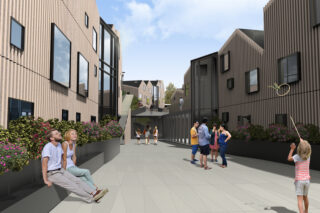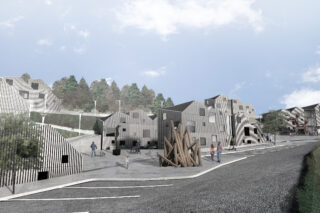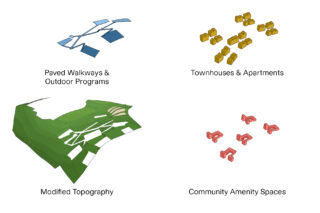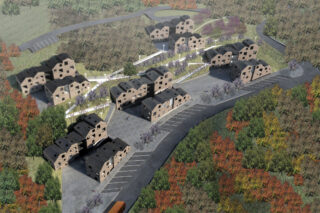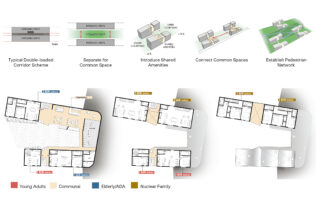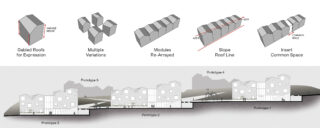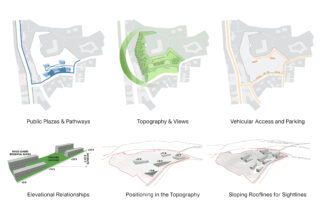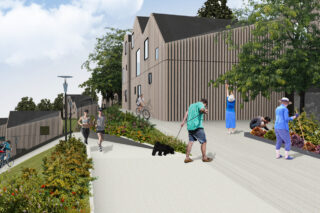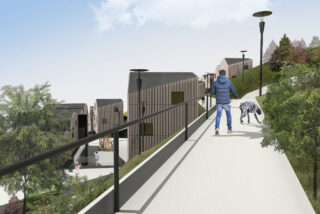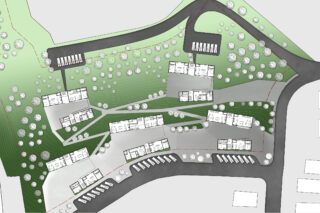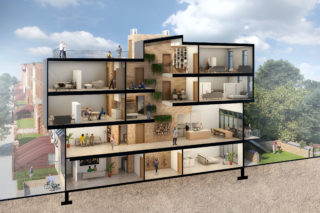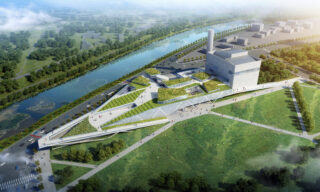Bartlett Commons
Award-winning competition entry for proving affordable housing for missing middle districts
A new housing type, designed around community interaction, can create better neighborhoods and enrich the lives of its residents. Our approach applies strategies used in dense urban cores to enhance the numerous benefits available to medium-density communities, including Asheville, such as picturesque surroundings, moderate cost, and existing community bonds.
Densification and Form
Primary among our strategies is an exchange of modest amounts of personal space for a diversity of community-wide amenities able to serve many types of households. By increasing unit density, the design allows significant common space, promoting communal interaction and casual encounters. Examples include a commercial kitchen for hosting dinner parties, a wellness center for assisted living services, or a daycare space for shared nanny services. The design appropriates the gable roof to give a unique architectural identity to each of the dwelling units. By arraying multiple variations of this form, each building is unique, while maintaining the same formal vocabulary. Rooflines slope to enhance sightlines, and carved voids signify entries and shared spaces.
Working with the Site to Establish a Network
A second strategy uses the buildings’ siting to form a network of interlinked courtyards, accessible to the general public, and for use in neighborhood-wide events and installations. Acting as destination and extension of the pedestrian-oriented Depot Street, these contribute to a walkable zone that welcomes discovery and promotes community interaction. Outdoor spaces in the network may house school plays, local art installations, block parties, community gardens, and other activities enrich neighborhood life. The design establishes a fixed sectional relationship between buildings, allowing a reasonably walkable elevation change throughout the steeply sloping site. The site path dictates the location of buildings, while views and placement determine the scale of each building. Deploying this strategy allows the architecture to achieve low sightlines and retain the natural slope.
Drawings
- Location Asheville, North Carolina
- Sponsor AIA - North Carolina | Activate NC
- Size 55,000sf
- Status Competition | Merit Award Winner
